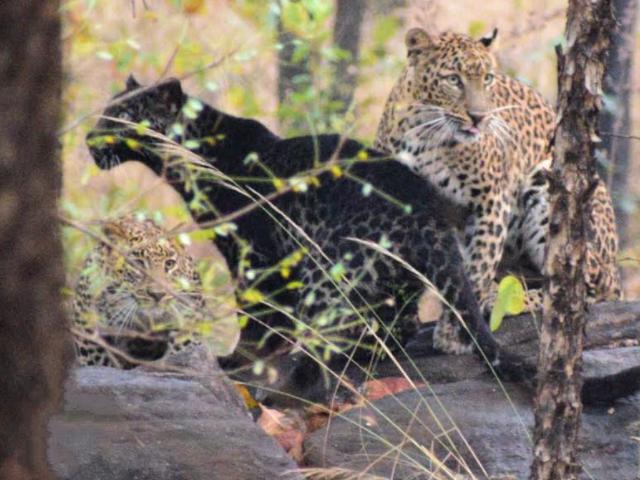Kipling Immortalises Black Panther
Rudyard Kipling immortalized the black panther –Bagheera. As a child Kipling lived in India and most of his stories are set in the country, though it is not entirely clear in exactly which part of the country. The jungles that claim to be associated with Kipling stories include Pench National Park located near the district of Seoni.
Also read: Like Her Mother in Pench, Patdev Tigress delivers 5 cubs
The park is also popularly known as Mowgli land and the entire region is called Kipling country. Also called as the ghost of the jungle, black panthers are a smart, stealth-like attacker, its dark coat helps it hide and stalk prey very easily, especially at night. In mid –June, the ‘Bagheera’ in Pench was sighted for the longest duration when it hunted a deer and ate lazily.
Melanistic Black Leopard is Rare
Black leopards are extremely rare creatures. The one found in Pench was first spotted sometime in mid 2020 when the country was facing a lockdown. It was like a saya, a shadow, a forest guard reminisces. “For a moment it was here and then disappeared in the woods”, he said. In the eerie jungle silence , he looked for the cat again but it did not return. Even otherwise, the leopards are elusive. Spotting the black variant of this cat in the dark jungle is even more difficult. A black panther is the melanistic colour variant of the leopard (Panthera pardus) and the jaguar (Panthera onca).It is not a subspecies but a melanistic breed of Jaguars and Leopards. In Latin American, they are black Jaguars while in Asia and Africa, they are black leopards. Black panthers have excess black pigments. Though their typical rosettes are also present , they are not visible prominently.
Also read: Leopards Need Tiger-Like Protection Programmes in India
They have been found mostly in tropical forests in Kenya, India, Sri Lanka, Nepal, Thailand, Peninsular Malaysia and Java, and black jaguars in Mexico, Panama, Costa Rica and Paraguay. Melanism is caused by a recessive allele, one of the two or more possible forms of a gene that are found at the same place on a chromosome, in the leopard. In a way , they are opposite of the while tigers. A recessive gene inherited from both parents is the cause of the white coloration. Roughly 1 out of 10,000 tigers are born with this rare genetic mutation, called leucism which causes the tiger to lose pigmentation in its fur. Similarly, there are white deer and white bear (not polar bears) also spotted, though rarely, in Indian jungles .As Indian wildlife research work is tiger driven, leopards are neglected. “Despite their widespread distribution, leopard habitats are being increasingly fragmented. This has resulted in leopards venturing out into human- dominated landscapes and ending up in conflicts”, a government report said.
Images :Sachin Kinjal Wildlife.Sourced by: Vikram Singh Parihar , director Pench tiger reserve




What a disperate creatures in Indian jungle..
ReplyDeleteThanks to mother Earth....